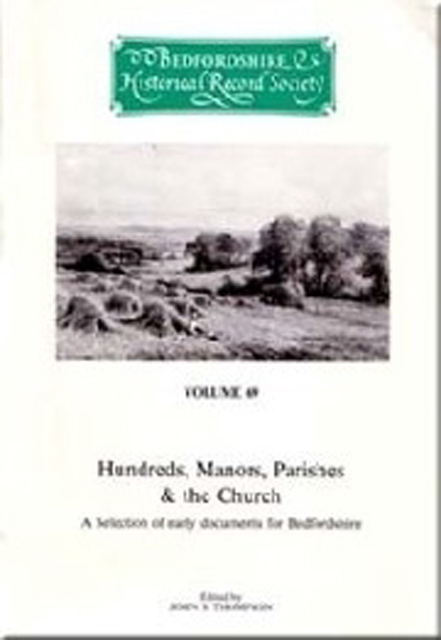Book contents
- Frontmatter
- Contents
- Abbreviations
- Symbols Used In Transcription
- Preface: John Stevenson Thompson
- The Hundred Rolls of 1274 And 1279
- Account Roll For Higham Gobion And Streatley 1379-1382
- Blunham Rectory Accounts 1520-1539
- Turvey Churchwardens' Accounts 1551-1552
- Bedfordshire Archidiaconal Visitations 1578
- Eggington Manor Court Rolls 1297-1572
- Index of personal names
- Index of places
Account Roll For Higham Gobion And Streatley 1379-1382
Published online by Cambridge University Press: 05 August 2023
- Frontmatter
- Contents
- Abbreviations
- Symbols Used In Transcription
- Preface: John Stevenson Thompson
- The Hundred Rolls of 1274 And 1279
- Account Roll For Higham Gobion And Streatley 1379-1382
- Blunham Rectory Accounts 1520-1539
- Turvey Churchwardens' Accounts 1551-1552
- Bedfordshire Archidiaconal Visitations 1578
- Eggington Manor Court Rolls 1297-1572
- Index of personal names
- Index of places
Summary
This account roll [BCRO cat. no. BS 1175] contains accounts for the manor and grange of Higham Gobion, and also accounts dealing with Streatley, for the years 1379-1382. It was deposited at the Bedfordshire County Record Office in March 1940 by the London solicitors, Messrs Farrer & Co., as part of an archive of about 110 deeds and documents relating to Higham Gobion manor and rectory and Streatley manor dating from 1379 to 1595.
The parish of Higham Gobion originally lay in three detached parts, of which the largest, containing the church, the present manor farm house, and the old rectory house, was bounded south and west by Barton in the Clay, north by Silsoe and Gravenhurst, and east by Shillington and by Hexton in Hertfordshire. To the west lay two smaller areas: the first, containing the site of a deserted hamlet, and also Faldo Farm, presumably the site of the manor of Westhey and Faldo, is bounded south and east by Barton, west by Pulloxhill and north by Silsoe; further west is the second detached area, containing Higham Bury, and bounded north-west by Flitton, south-west by Westoning, south by Harlington and east by Pulloxhill. This contained also Gubbins (for Gobions) Wood.
The manor of Higham was by 1158 in the hands of the Gobion family, from whom the parish derives its name. This family had acquired also by 1158 the nearby manor of Streatley with Sharpenhoe. Richard Gobion died in 1300, and his heirs were his two daughters of whom Hawisa, the elder, was the wife of Ralph Butler, and to her and her descendants came these two main manors. Ralph Butler died in 1342 leaving a son, Sir John Butler, but it would appear that both Higham Gobion and Streatley with Sharpenhoe continued in the hands of Hawisa until her death in 1360. By then the son, Sir John, had predeceased her, as had Sir John’s own elder son, Ralph, and so the two manors came to a second grandson, Ralph’s younger brother, Sir Edward. Sir Edward eventually died without issue in 1412, and it was, therefore, for Sir Edward Butler that these accounts were made.
- Type
- Chapter
- Information
- Hundreds, Manors, Parishes and the ChurchA Selection of Early Documents for Bedfordshire, pp. 64 - 123Publisher: Boydell & BrewerFirst published in: 2023

